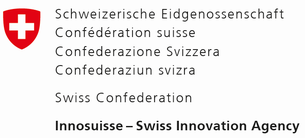Switzerland, Singapore and the US have been nurturing innovation and talent; this has kept them at the top of the Global Competitiveness Index, which profiles 140 economies. Yet recent developments have created a number of downside risks for Switzerland.
The Global Competitiveness Report of the World Economic Forum (WEF) is an annual assessment of the factors driving productivity and prosperity in 140 countries. This year’s edition found a correlation between highly competitive countries and those that have either withstood the global economic crisis or made a swift recovery from it. The report’s Global Competitiveness Index (GCI) also finds a close link between competitiveness and an economy’s ability to nurture, attract, leverage and support talent. The top-ranking countries all fare well in this regard.
First place in the GCI rankings, for the seventh consecutive year, goes to Switzerland. Its strong performance in all 12 pillars of the index explains its remarkable resilience throughout the crisis and subsequent shocks. Singapore remains in 2nd place and the United States 3rd. Germany improves by one place to 4th and the Netherlands returns to the 5th place it held three years ago. Japan (6th) and Hong Kong SAR (7th) follow, both stable. Finland falls to 8th place – its lowest position ever – followed by Sweden (9th). The United Kingdom rounds up the top 10 of the most competitive economies in the world.
Innovation
Switzerland leads the innovation pillar, thanks to its world-class research institutions (1st), high spending on research and development (R&D) by companies (1st), and strong cooperation between the academic world and the private sector (3rd). But many other factors contribute to Switzerland’s innovation ecosystem, including the level of business sophistication (1st) and the country’s capacity to nurture and attract talent.
Labor Market and dual education system
Switzerland boasts an excellent education system at all levels and is a pioneer of the dual education system. The labor market is highly efficient (1st), with high levels of collaboration between labor and employers (1st) and balancing employee protection with flexibility and business needs.
Swiss public institutions are among the most effective and transparent in the world (6th), and competitiveness is further buttressed by excellent infrastructure and connectivity (6th) and highly developed financial markets (10th). Last but not least, Switzerland’s macroeconomic environment is among the most stable worldwide (6th) at a time when many developed countries continue to struggle in this area.
Downside risks
These very strong economic fundamentals help to explain Switzerland’s resilience throughout the crisis. Yet recent developments have created a number of downside risks and leave little policy space. These include the sluggish recovery in key trading partner countries; the appreciation of the Swiss franc following the exit of the exchange rate floor; near-zero inflation; and negative real interest rates. Uncertainty about future immigration policy following the referendum against “mass immigration” could undermine Switzerland’s capacity to tap into the global talent pool needed to power its economy. Switzerland must continue to sharpen its competitive edge to justify the high cost of doing business in the country.
(SK)























































Please login or sign up to comment.
Commenting guidelines